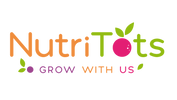What’s the Connection Between ADHD and Food Dyes?
We often think of sugar as the primary culprit for turning our sweet little angels into little monsters at a birthday party. And, sure, sugar can cause hyperactivity and make it hard for kids to settle down or sleep.
But sugar is not the only ingredient associated with hyperactivity in kids, especially those who have Attention Deficit Hyperactivity Disorder (ADHD).
Food dyes have also been shown to trigger some kids who have ADHD. So while food dyes are not a cause of ADHD, eating them can worsen some kids’ symptoms. Some research even suggests that food dyes can trigger symptoms in kids who don’t have ADHD.
What are Food Dyes Used for?
The main reason for food dye is to make food look more appealing. It’s not a new phenomenon. In fact, we can trace the use of natural products to make food dyes back thousands of years. The first artificial food dyes were produced in 1856 using coal tar. Yum.
Today’s food dyes are made from petroleum, which is only slightly less gross to think about eating than coal tar.
Unfortunately, it’s hard to stay away from food dyes. Unless you only eat whole foods, you likely eat some form of food dye every day. It’s everywhere!
There’s food dye in baked treats, cereal, ice cream, pickles, bread, even yogurt. If a food dye doesn’t come from nature or explicitly state that it is free from artificial colors, it probably has food dye in it.
Which Food Dyes are the Worst?
There are two main types of food dyes–synthetic and natural. Synthetic food dyes are the ones you need to watch out for. These are chemically engineered and don’t contain any natural ingredients.
In contrast, natural food dyes come from plant sources, like beets. Food manufacturers tend to prefer using synthetic dyes because they offer a more vibrant color.
There are several types of synthetic dyes. Here are some of the worst offenders that could exacerbate ADHD symptoms in some kids.
Red 40
As the most commonly used food dye out there, it can be tricky to know when you’re consuming red 40. For example, many children’s liquid medications include it, as do many breads, cereals, and candies. Unfortunately, red 40 is also the most dangerous one, as it contains a carcinogen called benzidine, which can increase cancer risk.
Blue 1
The sneaky thing about this one is that sometimes it shows up in things that aren’t blue! Plus, blue 1 might also be in clothes, like blue jeans. This dye has been shown to negatively affect nerve cells and trigger hyperactivity in some people.
Yellows 5 and 6
If you eat or drink anything yellow, there’s a good chance that it contains one of these dyes. That could be changing, though. Kraft recently dropped yellows 5 and 6 from its mac and cheese formula. However, other foods like American cheese and Mountain Dew still contain these carcinogen-loaded dyes.
Caramel
It sounds delicious, but caramel dyes are anything but. They’re found in dark sodas (think Coke or Pepsi) as well as gravies and sauces. In addition, caramel coloring can create a cancerous byproduct. One more reason to just say no to soda!
Avoiding Food Dyes
The only way to avoid food dyes is to be vigilant. They can show up in any packaged food. So, read labels and don’t buy foods that list any of these food dyes as an ingredient.
If your child has ADHD, try an elimination diet to see what happens when they go a week without having any food dyes. You might be pleasantly surprised!
We know it’s hard to make sure your kids get all the nutrients they need from food alone. That’s why we developed an all-natural vitamin supplement that’s free from artificial dyes and preservatives.
ABC’s & 1, 2, 3’s has all the vitamins and minerals your kids need to grow healthy and strong. Get yours today!

